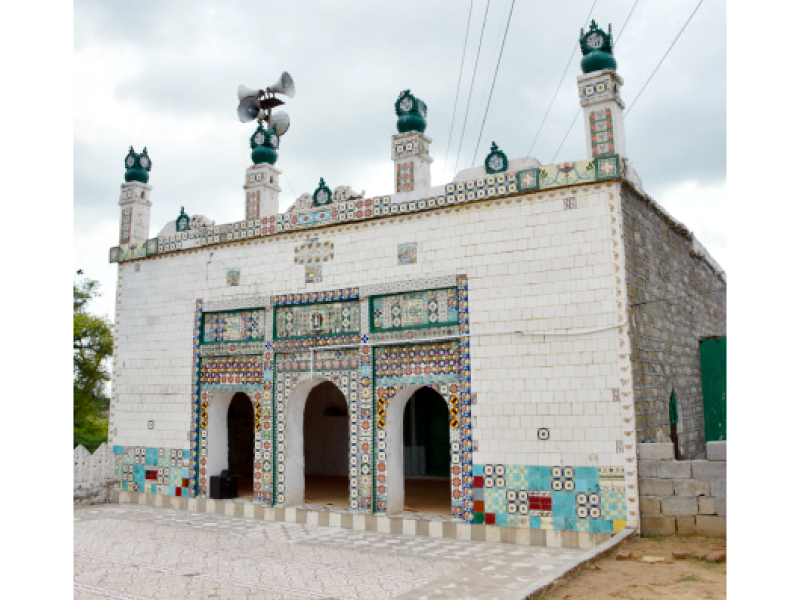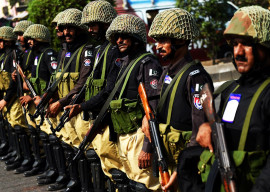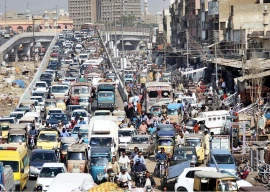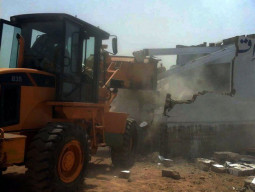
Driving on the bumpy road that leads to Sector D-12, a picturesque mosque figures prominently; its facade covered with beautiful ceramic-like tile work and surrounded by centuries-old lush green trees.
Located short of a police check post at the foothills of the Margallas, Masjid-e-Oulia was built in 1889 using limestone and imported tiles by Malik Fateh Baksh, the caretaker of Baba Khushi Muhammad’s shrine which is adjacent to the mosque and is over 125 years old.
Much younger than other culturally-rich cities, such Lahore and Peshawar, the capital has very few historic and well-preserved buildings.
Unlike other mosques that look a bit dated with opposing patterns that contrast, sometimes awkwardly, this mosque seamlessly blends traditional and new styles of patterns to make a timeless yet modern structure. Despite its small size, the front wall of the mosque gives an Ottoman-influenced architectural feel.

Looking at the facade of the mosque, the intricate tile work and symmetry speak volumes about the architectural and artistic excellence of its builders, keeping in mind that its roof was last repaired in 1992 and the rest of the structure has not been renovated in decades.
Tahir Mehmood, the present caretaker of the mosque and the great grandson of Malik Fateh Baksh, told The Express Tribune “I moved from Wah Cantt to Islamabad only to look after this mosque and play my role in preserving our heritage.” Mehmood is currently pursuing his PhD at the International Islamic University Islamabad and is working on his thesis on faith healing---treating diseases spiritually.
Mehmood added spring water was being used at the mosque for ablution and drinking purposes, however, there were other springs in the area which could supply clean water to the entire sector of D-12 but unfortunately, instead of being utilised so by the Capital Development Authority (CDA), sewerage water was being allowed to mix in them. He lamented that CDA was spending billions of rupees on laying pipelines from Khanpur Dam and building pumping stations, stating that the authority is guilty of neglecting the most precious resource of a large number of brooks, springs and streams crisscrossing the capital.
Altaf Hussain, who looks after the mosque while Mehmood attends classes during the day, said “This part of Islamabad is pristine and enchanting. Visitors come here for the fresh, ice-cold spring water and the Buddha caves located nearby.” He added that the neighborhood was rich in historic archaeological sites, such as the ruins of Shah Allah Ditta, but a number of housing schemes were mushrooming in the area, posing a serious threat to these historic and preservation-worthy sites.

When contacted, CDA Member Environment Mustafain Kazmi said “We’re working towards preserving these sites in Sector D-12 and plan on turning it into a prominent tourist destination like Saidpur Village.” However, he said some pockets in the area have land ownership issues and once these are sorted, the authority will be able to take proper steps in preserving these sites.
He added that a monsoon tree plantation drive would be launched in the capital in a week and around 0.1 million trees will be planted in D-12 and its surrounding sectors.
Meanwhile, the peaceful aura and crisp and clean air around the mosque continue to make it one of the capital’s best kept secrets and must-see place for those who enjoy Islamic architecture.
Published in The Express Tribune, September 9th, 2014.
COMMENTS (1)
Comments are moderated and generally will be posted if they are on-topic and not abusive.
For more information, please see our Comments FAQ













































sounds inviting .Hope to visit it one day but then if wishes were horses ....